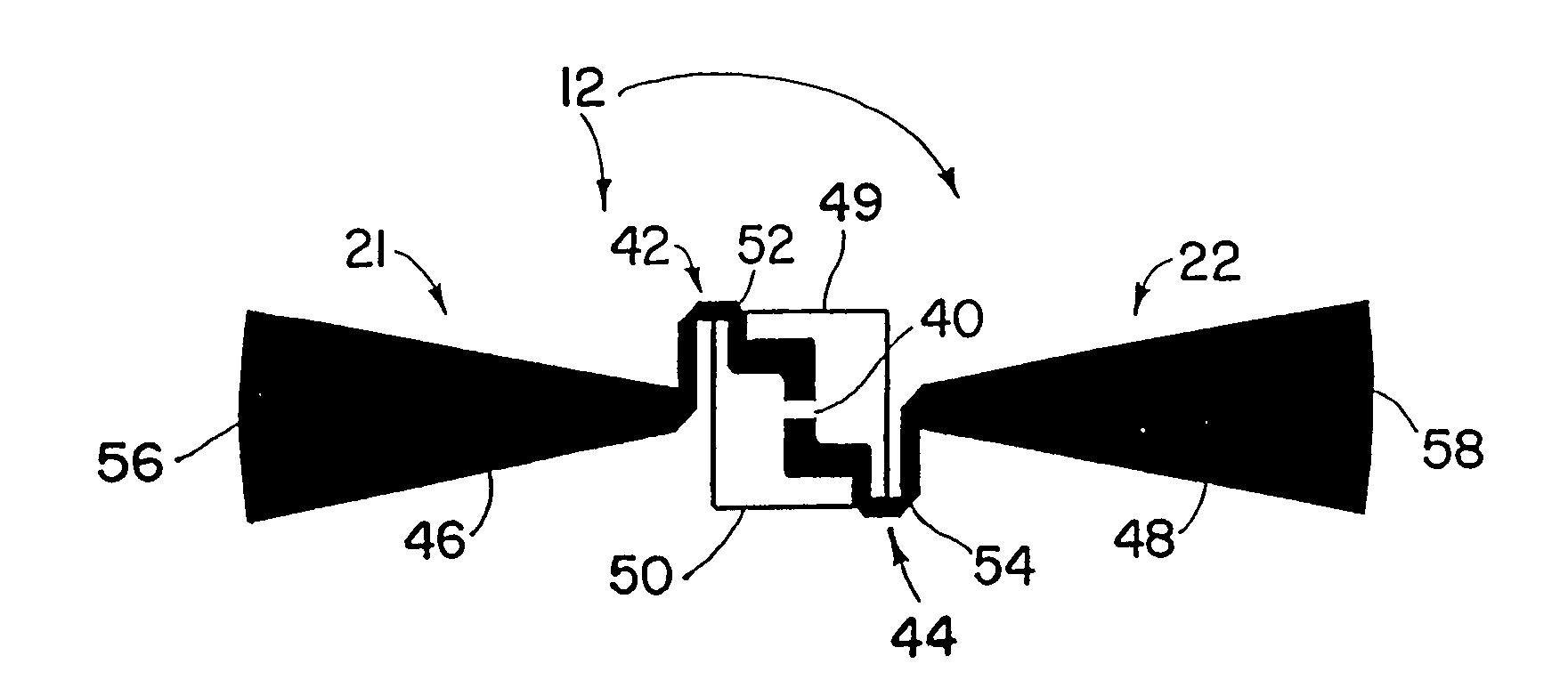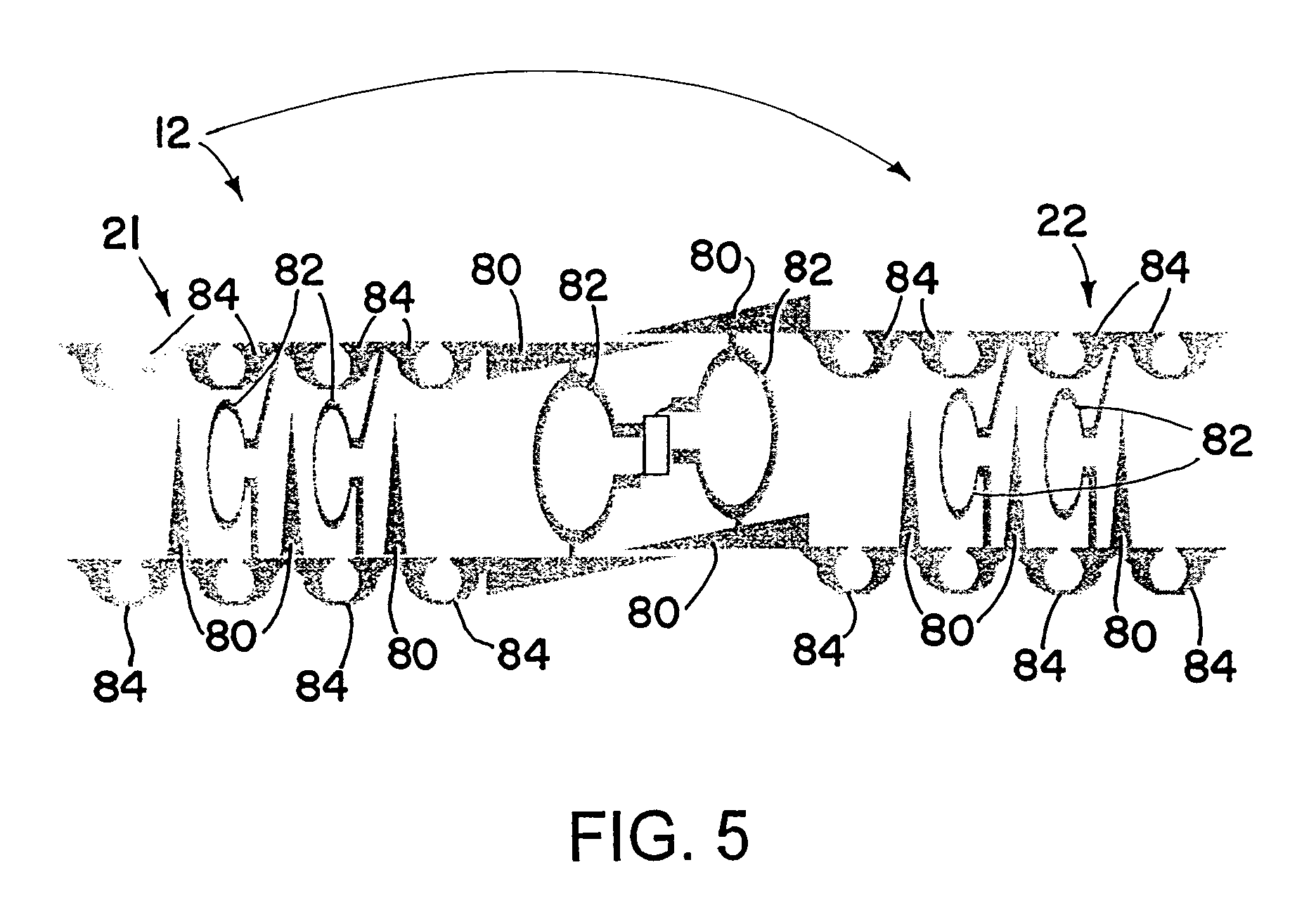RFID device with content insensitivity and position insensitivity
a radio frequency identification and content technology, applied in loop antennas with ferromagnetic cores, instruments, burglar alarm mechanical actuation, etc., can solve the problems of low efficiency antennas, difficult to determine what is a “good” antenna, and large etc. problem, to achieve the effect of small loss resistance and relatively small radiation resistance, and not working well in most situations
- Summary
- Abstract
- Description
- Claims
- Application Information
AI Technical Summary
Benefits of technology
Problems solved by technology
Method used
Image
Examples
Embodiment Construction
[0049]An RFID device includes an antenna structure that provides good performance throughout a range of different positions relative to nearby materials, such as metallic objects in a carton or other container. The antenna structure has compensation elements that interact with the nearby materials to provide good performance over the range of different positions. The compensation elements include both electrical compensation elements, which interact with the nearby materials primarily using electric fields, and magnetic compensation elements, which interact with the nearby materials primarily using magnetic fields. The electrical compensation elements and the magnetic compensation elements may be selected and may be positioned within the antenna structure such that the performance of the antenna structure is substantially unchanged (or at least acceptable) through the range of different positions. The nearby materials may include dielectric and / or electrically conductive materials t...
PUM
 Login to View More
Login to View More Abstract
Description
Claims
Application Information
 Login to View More
Login to View More - R&D
- Intellectual Property
- Life Sciences
- Materials
- Tech Scout
- Unparalleled Data Quality
- Higher Quality Content
- 60% Fewer Hallucinations
Browse by: Latest US Patents, China's latest patents, Technical Efficacy Thesaurus, Application Domain, Technology Topic, Popular Technical Reports.
© 2025 PatSnap. All rights reserved.Legal|Privacy policy|Modern Slavery Act Transparency Statement|Sitemap|About US| Contact US: help@patsnap.com



